Alicia Garza was in a bar in Oakland, California, drinking bourbon when the verdict came in. It was July 2013 and she had been following the trial of George Zimmerman, a neighbourhood watch volunteer in Sanford, Florida, who had shot dead a 17-year-old African-American by the name of Trayvon Martin in February of the preceding year. Martin had been unarmed, on his way back from a 7/11 convenience store where he had just bought himself an iced tea and a bag of Skittles.
There had, of course, been shootings of young black men before. But this one had a particular resonance. Garza had a younger brother of a similar height and build to Martin. She felt it could just as easily have been him.
In the bar, Garza, her husband and her two friends had been checking their phones for updates from the trial. The jury had been deliberating for 16 hours on Zimmerman’s fate. When the verdict was announced, she learned of it first through Facebook: not guilty of second degree murder and acquitted of manslaughter.
“Everything went quiet, everything and everyone,” Garza says now. “And then people started to leave en masse. The one thing I remember from that evening, other than crying myself to sleep that night, was the way in which as a black person, I felt incredibly vulnerable, incredibly exposed and incredibly enraged. Seeing these black people leaving the bar, and it was like we couldn’t look at each other. We were carrying this burden around with us every day: of racism and white supremacy. It was a verdict that said: black people are not safe in America.”
Garza logged on to Facebook. She wrote an impassioned online message, “essentially a love note to black people”, and posted it on her page. It ended with: “Black people. I love you. I love us. Our lives matter.”
Garza’s close friend, Patrisse Cullors, read the post in a motel room 300 miles away from Oakland that same night. Cullors, also a community organiser working in prison reform, started sharing Garza’s words with her friends online. She used a hashtag each time she reposted: #blacklivesmatter. The following day, Garza and Cullors spoke about how they could organise a campaign around these sentiments.
“A call to action,” says Garza. “To make sure we are creating a world where black lives actually do matter.”
They reached out to Opal Tometi, another activist they knew in the field of immigrant rights. The three women started by setting up Tumblr and Twitter accounts and encouraging users to share stories of why #blacklivesmatter. Garza made protest signs with block capital letters and put them in the window of a local shoe shop. Cullors led a march down Rodeo Drive in Beverly Hills with a banner emblazoned with the same hashtag. The slogan started gaining traction.
Then, on 9 August 2014, a little over a year after Zimmerman was allowed to walk free from court, 18-year-old Michael Brown was shot dead by a white police officer in Ferguson, Missouri. Officer Darren Wilson had fired 12 rounds. Brown had been unarmed.
Protests broke out the day after Brown’s shooting. There was some unrest and looting. Cars were vandalised, commercial properties broken into. Police officers in riot gear took to the streets. Watching the drama unfold on TV, Garza had that same sickening feeling she’d had when she heard of Trayvon Martin’s death. Along with Cullors and Tometi, she organised a “freedom ride” to Ferguson under the auspices of the #blacklivesmatter campaign. More than 500 people signed up from 18 different cities across America. When they reached Ferguson, Garza was astonished to see her own phrase mirrored back at her on protest banners and shouted in unison by people she had never met.
When a grand jury announced Darren Wilson would face no indictment in the matter of Brown’s death, a group of protesters chanting “Black lives matter” shut down a local shopping mall. Later, after a spate of further deaths of unarmed black men, the phrase started appearing on T-shirts and mugs and badges. In December, Hillary Clinton used the phrase in a speech delivered at a human rights gala. It was referred to in television programmes – an episode of Law & Order; the finale of Empire. By January 2015, the American Dialect Society had declared #blacklivesmatter as their “word” of the year.
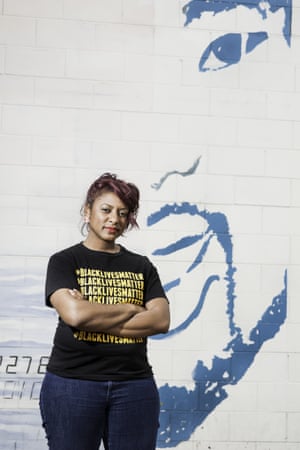
Alicia Garza in San Francisco, May 2015: ‘We have a lot of leaders, just not where you might be looking for them. If you’re only looking for the straight black man who is a preacher, you’re not going to find it.’ Photograph: Kristin Little
In June, following the shooting of nine people by a suspected white supremacist in a church in Charleston, the activist Bree Newsome climbed the flagpole outside the statehouse in Columbia, South Carolina and removed the Confederate flag. Her actions were tweeted and retweeted under the hashtag #blacklivesmatter. At a subsequent eulogy for the victims of the church shooting, President Barack Obama paid tribute to black churches for being a place where children were “taught that they matter”. There are now over 26 Black Lives Matter chapters across the United States. From one heartfelt Facebook post, it has spawned a new civil rights movement.
Garza has been astonished by the response. “This wasn’t something that we – you know…” She pauses. “We didn’t have a strategic plan.”
Black America is in a state of protest. The 21st-century civil rights movement, exemplified by the action taken by Garza and those like her, is democratic in its aims and agile in its responses. It is fuelled by grief and fury, by righteous rage against injustice and institutionalised racism and by frustration at the endemic brutality of the state against those it deems unworthy.
In almost every area of society, black Americans remain disadvantaged. Education? Forty-two percent of black children are educated in high-poverty schools. Employment? The unemployment rate for black high-school dropouts is 47% (for white high-school dropouts it is 26%). Housing? Although black people make up just 13.2% of the US population, they account for 37% of the homeless. Voters’ rights? One in every 13 African Americans of voting age is disenfranchised because of a felony conviction – a rate more than four times greater than the rest of the US population. In fact, African Americans now constitute nearly 1 million of the total 2.3 million jail population and are incarcerated nearly six times as often as white people.
Despite the election of America’s first black president in 2008, those profound structural fissures remain. But although the challenges might be similar, the new civil rights movement is tackling them in new ways compared to the 20th-century movement. The most notable difference is that, in 2015, there are no leaders in the conventional sense: no Martin Luther King or Malcolm X, no single charismatic voice that claims to speak for the many. Several people I interview insist this is a strength: they make the bleak point that, historically, single leaders of civil rights movements have almost always been assassinated. They have also been male.
“We have a lot of leaders,” insists Garza, “just not where you might be looking for them. If you’re only looking for the straight black man who is a preacher, you’re not going to find it.”
Instead, the new civil rights movement combines localised power structures with an inclusive ethos that consciously incorporates women, lesbian, gay, bisexual, transgender and queer activists. DeRay Mckesson, one of the most high-profile activists with a Twitter following of 176,000, is a gay man. Garza identifies as queer (her husband is transgender).
The new movement is powerful yet diffuse, linked not by physical closeness or even necessarily by political consensus, but by the mobilising force of social media. A hashtag on Twitter can link the disparate fates of unarmed black men shot down by white police in a way that transcends geographical boundaries and time zones. A shared post on Facebook can organise a protest in a matter of minutes. Documentary photos and videos can be distributed on Tumblr pages and Periscope feeds, through Instagrams and Vines. Power lies in a single image. Previously unseen events become unignorable.
The death of Eric Garner
Events like the arrest of a 43-year-old man named Eric Garner, who was placed in a chokehold for 15 to 19 seconds by a white police officer on the sidewalk of Staten Island, New York, in July 2014. Garner can be heard on mobile phone video footage saying, “I can’t breathe” a total of 11 times and was pronounced dead in hospital an hour later. The video went viral. “I can’t breathe” became a totemic phrase for protesters. The basketball player LeBron James wore a T-shirt with the words emblazoned across the front and was praised by President Obama for the act.
Events like a pool party in McKinney, Texas in June where a white police officer threw a 14-year-old black girl to the ground, pinning her down for several minutes, before pulling a gun on two teenage boys. A bystander filmed the fracas, posted it on YouTube where it was viewed almost 500,000 times before being picked up by all the major news channels. The officer was suspended and later resigned.
Texas pool party video
Events like this were happening before – as many activists say, “there’s a Mike Brown in every town” – but it is only now that technological advances and digital savvy have ensured the dots are joined.
“Social media’s significance is that it is recognising different incidents that might have gone unnoticed and sewing them together as a coherent whole,” says Ethan Zuckerman, the director of the MIT Center for Civic Media and the author of Rewire: Digital Cosmopolitans in the Age of Connection. “And that means we’re forced to recognise very serious structural issues.”
Social networking sites are used disproportionately by young, black Americans – 96% of African-American internet users aged 18-29 use a social network of some kind. Forty per cent of the same group say they use Twitter – 12% more than the comparable figure for young white people. According to Todd Wolfson, the author of Digital Rebellion: The Birth of the Cyber Left, the new civil rights movement has important precursors in grassroots uprisings such as the Arab spring and Occupy: “The Cyber Left is about flattening hierarchies, flattening governance processes, combined with using the logic of social networks for deep consensus building.”
Activist DeRay Mckesson updates his website and posts updates to Twitter from a McDonald’s in Ferguson. Photograph: Getty Images
Kwame Rose, a 21-year-old civil rights protester from Baltimore, agrees: “Social media plays a big part in everything. I find out information, I put it on Twitter, it starts trending the more people talk about it and then the institutions start feeling the pressure.”
It is no coincidence that the majority of these new digital activists are in their 20s – internet natives, brought up in the online age, versed in the politics of revolution. Mckesson composes his speeches in tweets to ensure the soundbites can be shared in 140 characters. One community organiser I speak to says with a straight face that “a youth activist means up to the age of 35”. When I ask another about her attitude towards violence, she replies coolly: “What is violence? Is violence denying people proper access to food, housing and healthcare? If you’re referring to rioting, I guess it’s a reaction to the system in which we live. The state is violent.”
Although #blacklivesmatter was the original call to action, it is only one tributary in a larger, fast-flowing river. Other organisations have sprung from a shared sense of unease, such as the Coalition Against Police Violence, which is run by two female activists, or the Black Youth Project 100, which has chapters across the country and campaigns against the use of racially motivated force, or the Florida-based Dream Defenders, which has mobilised communities against racial profiling and state oppression, and which started before Black Lives Matter. These activists communicate and link up online, minting a solidarity through social media that gives their separate voices mass focus and power.
As a result, says Steven Pargett, the communications director for Dream Defenders: “There are fewer gatekeepers, in terms of being able to tell our own stories.” He points out that during the protests in Ferguson, activists could take to Twitter to highlight the contradictions between police reports and eyewitness accounts. So while the TV networks were reporting on incidents of rioting and looting, real-time tweets from protesters on the ground claimed that the police had been firing tear gas and rubber bullets into groups of peaceful protesters.
In April, a similar thing happened in Baltimore. There were protests in the city following the death of 25-year-old Freddie Gray, who fell into a coma while in police care and later died of spinal injuries; the full autopsy has yet to be released. On the evening of 28 April, Kwame Rose was watching the coverage on television. He was “riled up” by what he saw: inflammatory language, talk of “riots” and no mention of the community initiative that had taken place earlier that day to try and clean up the streets.
“When the media started saying ‘tensions were high’, they were lying,” he tells me over Skype, peering out from beneath a pristine black baseball cap.
At 9.30pm, he went out with a group of organisers to help get people off the streets in time for the curfew. They asked some police to drop their riot gear and hold hands in prayer. It was, says Rose, “very calm”. Then he stumbled across a TV crew from Fox News. They were there to film the mustachioed talkshow host Geraldo Rivera who was attempting to interview a state senator among the crowds. Rose confronted Rivera about Fox News’s “biased” account of what was happening.
Kwame Rose confronts Geraldo Rivera.
“You’re not here reporting about the boarded-up homes and the homeless people,” he said, in an impassioned, impromptu speech caught on video. “You’re not reporting about the poverty levels up and down North Avenue… you’re here for the ‘black riots’. You’re not here for the death of Freddie Gray.”
The clip was shared on Twitter. When Rose woke up on Wednesday morning, the video had been picked up by the World Star Hip Hop aggregating blog.
“That’s a big thing,” Rose says now, shaking his head. At the time, he had a job as the doorman of a big hotel chain. When he got to work that day, his general manager told him the film was all over the TV. He lost his job as a result of the attention.
When Kwame was growing up, his father, “Big Rose”, had taught him about civil rights history. Now, Kwame realised, he was fighting the same fight. He quotes James Baldwin by way of explanation: “To be black and conscious in America is to be in a constant state of rage.”
“I see what’s being done and I’m mad about it,” he says. “It’s an attack on black masculinity. You see it all the time [in the mainstream media]. When Dylan Roof [the suspect in the Charleston church shooting] was arrested, you see all these baby pictures of him. We are the same age. After the Rivera video, I was called every other name than the one my parents gave me. Dylan Roof was ‘a lost child’. Mike Brown, at 18, was ‘a troubled black man’.”
Indeed, when Brown was gunned down, the photo initially used by some of the rightwing media was one taken from below, throwing his face into half-shadow, showing him glowering at the camera making a V sign. It was widely interpreted by conservative pundits as a gang-related gesture. There were other pictures available, including one of Brown as a chubby-cheeked teenager in headphones and a Varsity jacket. Thousands of people took to Twitter to post contrasting images of themselves, posing the question as to which would be chosen if they became the subject of a news report under the hashtag #IfTheyGunnedMeDown
“This was a way of saying ‘Hey, mainstream media, you’re doing something really bad! Here’s this pattern, what are you going to do about it?’” says Ethan Zuckerman from MIT. “What’s interesting is it didn’t get talked about to me. But the newspapers moved away from this problematic image [of Michael Brown].”
It was a perfect example of new civil rights activism: online pressure brought to bear on a single potent issue with high visibility. Similar action ensured the removal of the Confederate flag from the South Carolina statehouse in the wake of the Charleston church shooting. Because so many of the new generation of activists are young and smart and technologically engaged, there is a restless, inventive energy to their campaigns, which can be started with little more than an iPhone. With the dissemination of information online, there is greater accountability. The mainstream has fewer places to hide.
Since Brown was killed in the street in Ferguson, several other unarmed African Americans have been the victims of fatal violence at the hands of the police – Tamir Rice in Ohio, Tony Robinson in Wisconsin and Walter Scott in South Carolina, to name only a few. Online activism has ensured we know the victims’ names and that they are linked in our collective mind.
Until now, deaths like these were viewed as a chronic problem, endured by local communities yet largely hidden from broader public consciousness. But the rise of a new generation of digital activists such as Garza, Mckesson, Rose and others, has created a sense of emergency in America. Fatalities at the hands of police are now front-page news. They can no longer be ignored.
Samuel Sinyangwe’s earliest experience of racism was at elementary school. He grew up in Orlando, Florida in a predominantly white community and he remembers being beaten up by an older kid and being called the N-word in the playground. He had soccer practice just down the road from where Trayvon Martin was shot.
“I used to go to that same 7/11 [as Martin] every day for a packet of Starburst,” he says, talking from his home in San Francisco. “It could have been me. It really could have been anyone who looked like me.”
Protesters hold signs during a march and rally for Florida teenager Trayvon Martin in 2012. Photograph: Julie Fletcher/AP
When the Ferguson protests erupted, Sinyangwe felt a similar sense of injustice at the fate of Michael Brown and Trayvon Martin as many of those who took to the streets. But, he says, there was no comprehensive data available on police shootings “so we couldn’t get into the place of having a solutions-driven conversation”.
Sinyangwe, a 25-year-old Stanford graduate, data scientist and policy analyst, had the necessary skills-set to fill the gap. He had been following DeRay McKesson’s live-tweeting from Ferguson (“Tear gas feels like extreme peppermint tingling” and “Really bad car accident. Looting across from it. Pray for me”) and tweeted him. The two of them spoke on the phone. Along with fellow activist, Johnetta Elzie – an important presence in the movement – they set up Mapping Police Violence. The aim was to collate all the necessary statistical information on police killings nationwide, with a particular emphasis on black deaths at the hands of police.
It was a gargantuan task. Sinyangwe set about sourcing the core data from the three largest crowdsourced databases on police killings in the country and then comparing these to social media, police and local newspaper reports in order to identify the race of 91 percent of all victims. Within four months, the site went live.
The results were shocking. Sinyangwe’s work claimed that at least 1,149 people were killed by police in 2014, and that 304 of these – 26% – were black. Black people were nearly three times as likely as white people to be killed by police in 2014 and at least 101 of them were unarmed, according to Sinyangwe’s record. In March 2015, 36 black people were killed by police – one every 21 hours, and a 71 percent hike in numbers from the previous month.
(When the Guardian launched The Counted, a long-term investigative project, providing the most comprehensive database of officer involved deaths in the US ever published, which includes deaths in police custody and victims hit by vehicles, they found the tally for the same month to be 37 black Americans with 113 deaths across all ethnicities.)
Compiling the data was, says Sinyangwe, deeply depressing. For one of the pages on the site, he posted individual photos of unarmed victims killed by police in 2014, along with their stories. “All of that is incredibly heavy and sobering,” he says. “You’re reading these stories of people who were chased down for riding a bike in the street. However, it’s work that needs to be done.
“We have been holding a mirror up to the nation. And we’ve shown what has been going on for a very long time: that we are being brutalised. That the state is being violent against us… The nation is now aware of the problem. Whether we can agree on a solution or not is another question but at least they acknowledge something is going on and that’s a great first step.”
But what happens after that first step? Zuckerman warns that although social media can give the illusion of empowerment, it also runs the risk of diverting attention away from the knottier problems of longer-lasting policy change.
“We’re at a moment where trust in our major institutions is at an all-time low,” he says. “When you start losing trust in those institutions, you start losing your ability to change things. Social media is a place where people feel they can move the wheel, and they’re right – they can change the representation of a gun victim in mainstream media. They can build momentum around removing the Confederate flag. But the fear is that it might be harder to make these much bigger structural changes in education or wage policy or to have a conversation about our gun culture.”
 Deray Mckesson in a tweeted picture from Selma, Alabama.
Deray Mckesson in a tweeted picture from Selma, Alabama.
Some fear that certain actions are little more than publicity-seeking. When DeRay Mckesson recently visited South Carolina in the wake of the Charleston shooting, wearing the bright blue Patagonia body-warmer he wears to protests, several residents took to Twitter to express their anxiety that his presence would stir up unrest and created the #GoHomeDeray hashtag.
Oprah Winfrey, too, publicly aired her concern in an interview with People magazine at the beginning of the year. “It’s wonderful to march and to protest,” she said. “What I’m looking for is some kind of leadership to come out of this to say: ‘This is what we want. This is what has to change.’” On Twitter, she was condemned as being “out of touch”.
It is perhaps inevitable, as a movement gains in ground and size, that divisions will appear, that its focus will become messier. Alicia Garza talks of how #BlackLivesMatter has been appropriated by other, well meaning groups who have tried to adapt the message to state that “All Lives Matter”.
“The reality, of course, is that they do,” Garza says, “but we live in a world where some lives matter more than others. ‘All Lives Matter’ effectively neutralises the fact that it’s black people who are fighting for their lives right now.”
And then there are the inter-generational tensions. Some younger activists are wary of being dubbed “the new civil rights movement” because such a label undermines the traumatic nature of what is being faced in the present moment by black Americans and also because the new movement has not yet had the chance to mature, making any comparison unbalanced. Some resent the reverence accorded men such as Al Sharpton, Jesse Jackson and Harry Belafonte, who, in their eyes, represent a bygone era and who turn up in cities to hold press conferences only after the hard protest work has been done on the ground. They fear that the peaceful protests advocated by these elder statesman have little impact; that change will only be achieved by more assertive action.
Last December, there was a march organised by Sharpton’s National Action Network in Washington DC. Johnetta Elzie was one of several younger campaigners who climbed on to the stage, yelling into the microphone “We started this!” In the crowd, someone else held up a sign stating in vivid green letters: “We, the youth, did not elect Al Sharpton our spokesperson. Have a seat.”
When I speak to Jesse Jackson, he is sanguine about such incidents.
“Well some of them [the younger generation of campaigners] are respectful and some of them aren’t,” he says, talking over a crackling phone line just after attending the funeral service for the Charleston Nine. “But you’re not protected from racism by age or by class. The fact is, there’s no hiding place. We’ve got to work together.
“There’s been nothing more dynamic in America over the last 12 months than these mass marches. There’s a backlash. This is a mammoth backlash and it needs to happen.”
And there is evidence of real change if you look for it: charges were filed against six Baltimore police officers in May relating to the death of Freddie Gray and it is likely that police reform will be an unavoidable subject in the forthcoming presidential campaign. But Freddie Gray is still dead. So are many more black people who died in police custody this year. That’s the real issue.
Back in Oakland, Alicia Garza is reflecting on how much has happened since her original Facebook post, which became the hashtag that launched a thousand protests. Progress has been made, she says, and yet there is so much further left to travel.
“I have to be honest,” she says. “I feel like I live in a constant state of rage and I think a lot of black people do… It’s more than depressing to me. It makes me angry, particularly when people try to deny it’s happening.”
When she was younger, Garza wanted to be an architect. She liked the idea of “figuring out how to create something from nothing”. And, in truth, she and her two friends have ended up doing just that. Not by building a house, but by building a movement from the foundations up.

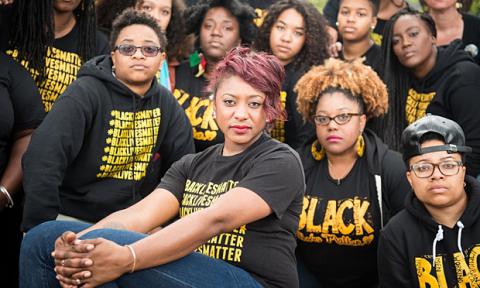
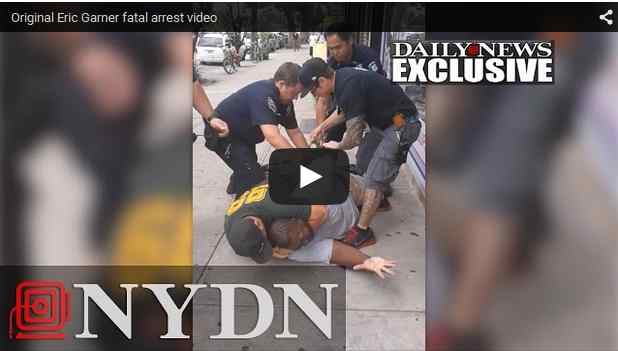

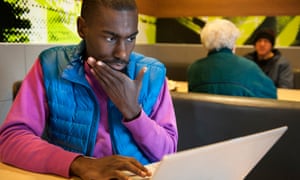

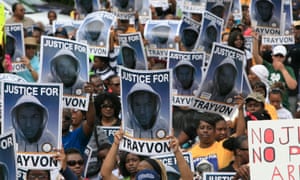
Spread the word